Sure, the shiny gold buildings, freaky demon statues, and annoying Korean tourists at Wat Phra Kaew, the royal temple of Bangkok, were plenty fun, but what really did it for me were the fantastic murals that cover the entire inner wall. What exactly is going on, or what saga it is based on, I have no idea, but I do know that I want Peter Jackson to make a movie version of it, starting tomorrow.
Update: From the Wikipedia article in The Ramayana.
Thailand’s popular national epic Ramakien is derived from the Hindu epic. In Ramakien, Sita is the daughter of Ravana and Mandodari (T’os’akanth (=Dasakand) and Mont’o). Vibhisana (P’ip’ek), the astrologer brother of Ravana, predicts calamity from the horoscope of Sita. So Ravana has her thrown into the waters, who, later, is picked by Janaka (Janok). While the main story is identical to that of the Ramayana, many other aspects were transposed into a Thai context, such as the clothes, weapons, topography, and elements of nature, which are described as being Thai in style. It has an expanded role for Hanuman and he is portrayed as a lascivious character. Ramakien can be seen in an elaborate illustration at the Wat Phra Kaew temple in Bangkok.
You can read an English translation of the Ramakien online here.
These images cannot be appreciated in such a small space, so please click on them for a larger file.

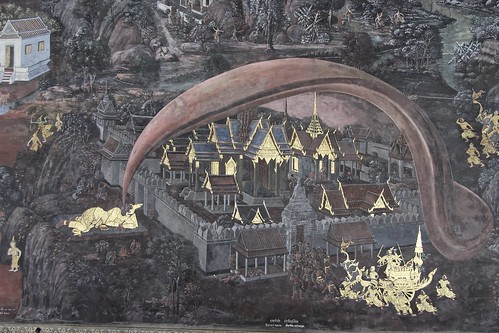

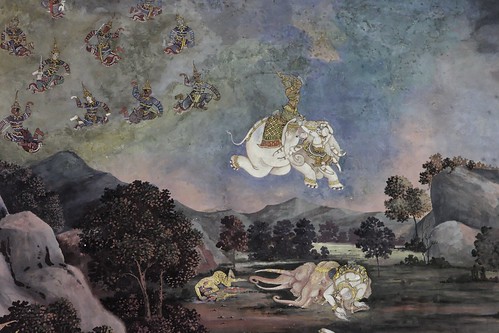
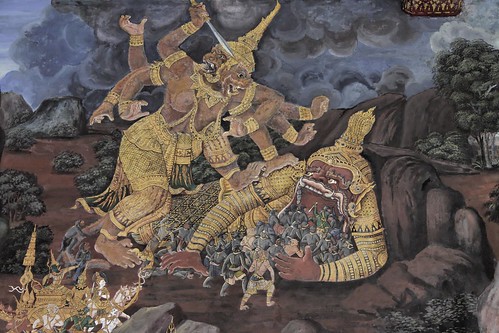
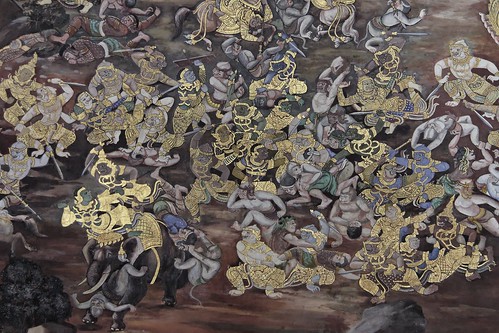
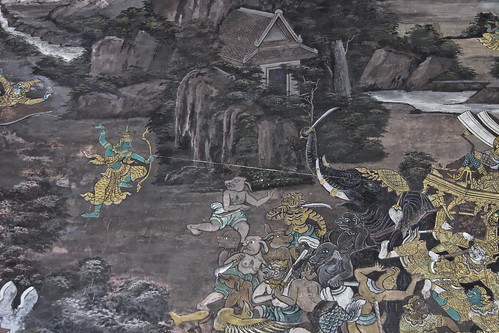
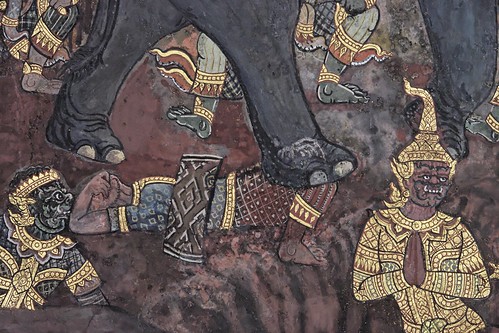
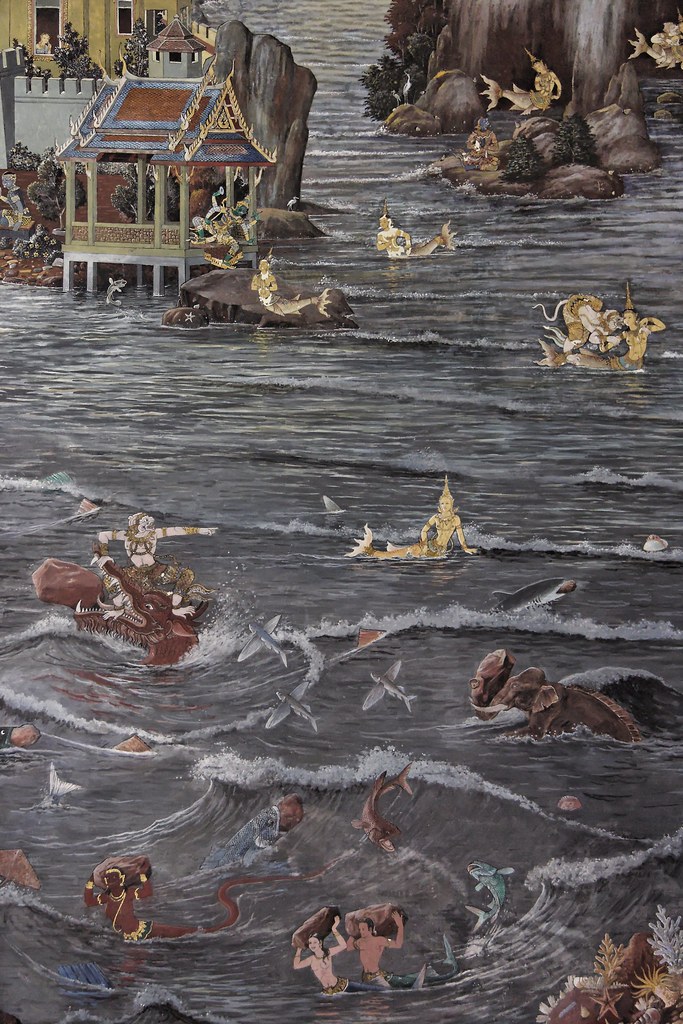
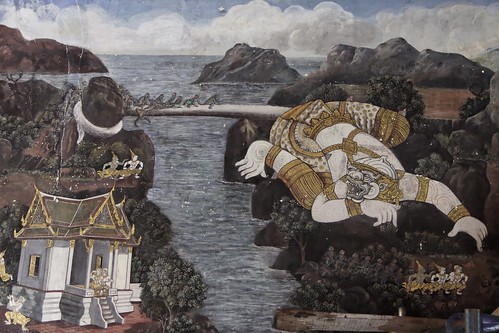
Fantastic pictures, thanks. I wish I knew a good Thai historian I could ask….
I am pretty sure (based on what my Thai teacher told me) that it’s based on the Ramayana, the Indian epic. Hanuman is the coolest character with the giant prehensile tongue.
I think any Buddhism expert could explain these. I overheard a Japanese tour guide explaining something about Son Goku leading the army of monkeys, and Asura and demons fighting each other. I would have listening more, but I was looking at the murals pretty carefully and they were just strolling by.
It’s interesting that the Ramayana is being portrayed in a Buddhist temple Thailand, but as far as I know is totally absent from East Asian Mayahana Buddhism (China, Japan, Korea, Vietnam)
If you go to the university bookstore, which is quite close to the temple of the Jade Buddah, you can buy a book for 250baht that explains what the ledgend means. By coincidence, I gave this book to a friend just last night.
Yeah or you could read it on Wikipedia for free. I’d rather give my money to the charlatans outside Wat Prat Khaew who try to sell foreigners “tickets” before they get to the real ticket counter.
it was only 250baht for a nice, well illustrated book. How cheap are you?
I also became entranced with those murals – I spent a couple of hours photographing them a couple years ago and want to go back to do it again with a better camera now. My favorite section is the one where Hanuman is gathering up all the little figures in the pool with his tongue, but all the little details are really what make it: The sharks holding rocks in their mouths, and little monkeys dragging people around with nooses.
Oh one thing – when I went there were artists actually restoring parts of the murals that had faded, which was kind of surprising.
I took some photographs of the restorers working. I’ll post some of those later.